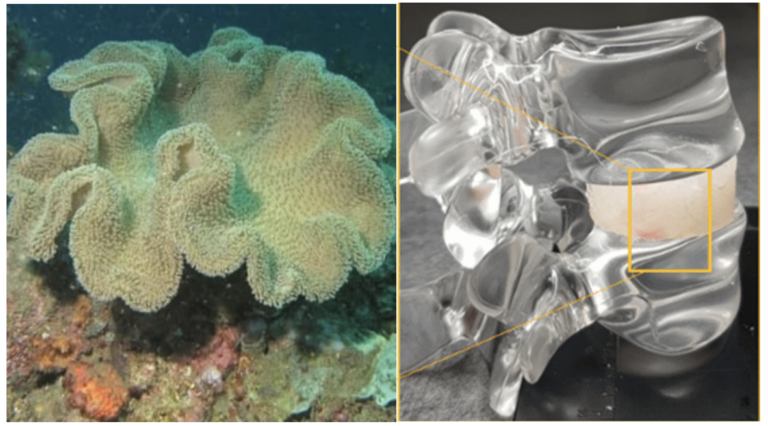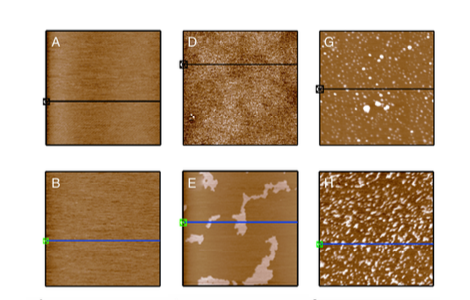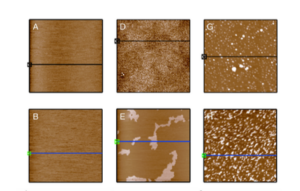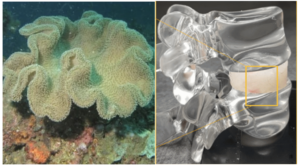Première ! Weizmann montre l’existence d’une boussole 3D dans le cerveau des chauves-souris
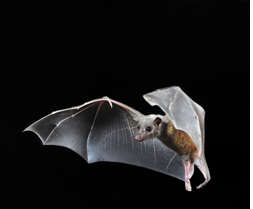
[:fr]Les pilotes d’avions sont entraînés à lutter contre le vertige, une sensation soudaine de désorientation verticale qui les rend incapables de distinguer le haut du bas, et peut provoquer des accidents. La même sensation de confusion peut être ressentie lorsqu’on sort d’une station de métro. Pendant quelques instants, on ne sait pas dans quelle direction aller, jusqu’à ce qu’on retrouve le sens de l’orientation. Dans les deux cas, on considère que la désorientation est due au dysfonctionnement temporaire d’un circuit cérébral qui joue le rôle d’une boussole tridimensionnelle (3D).
Des scientifiques de l’Institut Weizmann ont montré pour la première fois l’existence d’une sorte de boussole 3D dans le cerveau de mammifères. Cette recherche a été effectuée par le doctorant Arseny Finkelstein, du laboratoire du professeur Nachum Ulanovsky, dans le département de Neurobiologie, avec le docteur Dori Derdikman, le docteur Alon Rubin, Jakob N. Foerster et la docteure Liora Las. Dans un article publié dans la revue Nature du 3 décembre, les chercheurs ont montré que le cerveau des chauves-souris contient des neurones qui perçoivent dans quelle direction la tête des chauves-souris est orientée, et ils peuvent ainsi les aider à naviguer dans un espace 3D.
La navigation se base sur la mémoire spatiale, c’est-à-dire sur les expériences faites dans des endroits différents. Cette mémoire se forme en premier lieu dans une structure cérébrale profonde, la formation hippocampique. Chez les mammifères, trois types de cellules cérébrales, localisées dans des endroits différents de la formation hippocampique, forment les composants essentiels du système de navigation : les cellules de lieu et les cellules de grille qui jouent le rôle de GPS, permettant aux animaux de suivre leurs déplacements, et les cellules de direction de la tête, qui réagissent chaque fois que la tête de l’animal se tourne dans une direction spécifique, se comportant comme une boussole. Un grand nombre de recherches sur les cellules de lieu et sur les cellules de grille ont valu aux chercheurs, en 2014, le prix Nobel de physiologie ou de médecine, mais jusqu’il y a peu, les cellules de direction de la tête étaient étudiées seulement dans des situations bidimensionnelles (2D) chez les rats, et le codage dans le cerveau de la direction de la tête en 3D était très peu connu.
Pour étudier le fonctionnement des cellules de direction de la tête en trois dimensions, les scientifiques de l’Institut Weizmann ont développé un système de suivi leur permettant d’observer les trois angles de rotation de la tête sur un écran vidéo [dans la terminologie de l’aviation, on dit : yaw (lacet), pitch (tangage) et roll (roulis)] et le mouvement de roussettes d’Egypte volant librement. En même temps, l’activité neuronale des chauves-souris était contrôlée grâce à des implants de microélectrodes. Des enregistrements faits avec l’aide de ces microélectrodes ont montré que dans une sous-région donnée de la formation hippocampique, les neurones réagissent en particulier à un certain angle tridimensionnel de la tête : certains neurones ne sont activés que lorsque la tête de l’animal est dirigée vers cet angle 3D.
Cette recherche a aussi montré pour la première fois comment le cerveau calcule un sens de la direction verticale, l’intégrant avec la direction horizontale. Il s’avère que dans les boussoles neurales ces directions sont calculées séparément, à différents niveaux de complexité : les chercheurs ont trouvé que les cellules de direction de la tête dans une région de la formation hippocampique sont activées en réponse à l’orientation des chauves-souris relative à la surface horizontale, c’est-à-dire celle qui facilite l’orientation de l’animal en deux dimensions, tandis que les cellules répondant au composant vertical du mouvement des chauves-souris, c’est-à-dire à une orientation 3D, se trouvent dans une autre région. Les chercheurs pensent que les cellules 2D de direction de la tête pourraient servir aux déplacements le long de surfaces (comme par exemple, chez les humains, conduire une voiture) et de leur côté, les cellules 3D pourraient être importantes pour des manœuvres complexes dans l’espace, comme grimper sur les branches d’un arbre (ou dans le cas des humains, se déplacer dans des immeubles à nombreux étages ou piloter un avion).
Après avoir fait d’autres expériences, cette fois sur des chauves-souris inversées (qui se suspendent la tête en bas), les chercheurs ont réussi à expliquer comment les signaux de direction de la tête sont calculés dans leur cerveau. Il s’avère que ces calculs sont effectués d’une manière qui peut être décrite par un système exceptionnellement efficace de coordonnées mathématiques (toroïdales, pour utiliser le terme précis). Grâce à cette démarche informatique utilisée par leur cerveau, les chauves-souris peuvent s’orienter efficacement dans l’espace, que leur tête soit dirigée vers le haut ou vers le bas.
Cette recherche confirme l’idée que les cellules de direction de la tête dans la formation hippocampique servent de boussole 3D neurale. Bien que la recherche ait été menée seulement sur des chauves-souris, les scientifiques sont d’avis que leurs résultats pourraient aussi s’appliquer à des mammifères qui ne volent pas, comme les écureuils et les singes qui sautent sur les arbres, d’une branche à l’autre, et aussi à l’homme. « Ce schéma pourra aussi être appliqué à des espèces ayant une expérience plus limitée de 3D » comme l’a écrit le professeur May-Britt Moser, l’un des lauréats du prix Nobel 2014, dans le commentaire News and Views qui accompagne, dans la revue Nature, l’article des chercheurs de l’Institut Weizmann.
La recherche du professeur Ulanovsky est financée par : Rowland and Sylvia Schaefer Family Foundation ; Mark et Valeria Rosenbloom par l’intermédiaire de la Mike Rosenbloom Foundation ; Irving B. Harris Foundation ; M. et Mme Steven Harowitz (San Francisco, Californie) ; et le European Research Council.
L’Institut Weizmann des Sciences situé à Rehovot, en Israël, est l’un des centres de recherche scientifique pluridisciplinaire parmi les plus avancés du monde. Cet institut, réputé pour ses vastes recherches en sciences naturelles et exactes, emploie un grand nombre de chercheurs scientifiques, ainsi que des étudiants, des techniciens et autres membres du personnel. L’Institut concentre ses efforts de recherche sur les nouveaux moyens de lutte contre la maladie et la faim, l’examen de questions primordiales dans les mathématiques et l’informatique, l’exploration de la physique de la matière et de l’univers, la création de nouveaux matériaux et le développement de nouvelles stratégies pour la protection de l’environnement[:en]
Prof. Ulanovsky’s research is supported by the Rowland and Sylvia Schaefer Family Foundation; Mike and Valeria Rosenbloom through the Mike Rosenbloom Foundation; the Irving B. Harris Foundation; Mr. and Mrs. Steven Harowitz, San Francisco, CA; and the European Research Council.
Laboratory of Nachum Ulanovsky
Research interests
Neural Codes for 2D and 3D Space in Bat Hippocampus and Entorhinal Cortex
Our lab focuses on elucidating the neural basis of spatial cognition, navigation, and spatial memory in the mammalian hippocampal formation – using bats as a novel animal model that we pioneered. Out study species, the Egyptian fruit bat, is a large bat species weighing ~150-180 gr, which allows the bat to carry wireless neural telemetry and neuro-logging devices, optogenetic stimulators, miniaturized GPS systems, and more – all in flight. Some of our main results in recent years include finding grid-cells in the entorhinal cortex of crawling bats, without theta oscillations – arguing against theta-based models of grid cells. We also succeeded in recording neural spiking activity in freely flying bats, using a custom neural-telemetry system, and have found that in flight, 3D hippocampal place cells had nearly spherical 3D place fields. We also showed recently a surprising optimization principle in the sonar system of Egyptian fruit bats. Additional studies included tracking of bat navigation in the wild, using tiny GPS dataloggers, which provided evidence for a ‘cognitive map’ on a 100-km scale in bats.
Overall, our general approach is to take advantage of the unique properties of bats – their temporally-discrete sensory system (sonar) and excellent vision, and their 3D flight abilities – in order to ask general questions in Systems Neuroscience; particularly questions that are difficult to address using rodents. Our long-term vision is to develop a « Natural Neuroscience » approach for studying the neural basis of behavior – tapping into the animal’s natural behaviors in complex, large-scale, naturalistic settings – while not compromising on rigorous experimental control. We firmly believe that pursuing such an approach will lead to novel and surprising insights about the Brain.[:]

